Greyhound racing
Greyhound racing is the sport of racing greyhounds. The dogs chase a lure (traditionally an artificial hare or rabbit) on a track until they arrive at the finish line. The one that arrives first is the winner.
In many countries, greyhound racing is purely amateur and conducted for enjoyment. In other countries (particularly the UK, US, Ireland and Australia), greyhound racing is a popular form of gambling, similar to horse racing. There is some popular concern in the aforementioned countries regarding the well-being of the dogs; the effectiveness of industry efforts to address these concerns is controversial. A greyhound adoption movement has arisen to assist retired racing dogs in finding homes as pets.
Contents |
History
Modern greyhound racing has its origins in coursing. The first recorded attempt at racing greyhounds on a straight track was made beside the Welsh Harp reservoir, Hendon in 1876, but this experiment did not develop. The sport emerged in its recognizable modern form, featuring circular or oval tracks, with the invention of the mechanical or artificial hare in 1912 by Owen Patrick Smith. O.P. Smith had altruistic aims for the sport to stop the killing of the jack rabbits and see "greyhound racing as we see horse racing". The certificates system led the way to parimutuel betting, as quarry and on-course gambling, in the United States during the 1920s.
In 1926, armed with the Smith patents and a hand shake, it was introduced to Britain by an American, Charles Munn, in association with Major Lyne-Dixon, a key figure in coursing, and a Canadian, Brigadier-General Critchley. The deal went sour with Smith never hearing from Munn again. Like the American 'International Greyhound Racing Association' (or the In.G.R.A.), Munn and Critchley launched the Greyhound Racing Association, and held the first British meeting at Manchester's Belle Vue Stadium. The sport was successful in cities and town throughout the U.K. - by the end of 1927, there were forty tracks operating.
The sport was particularly attractive to predominantly male working-class audiences, for whom the urban locations of the tracks and the evening times of the meetings were accessible, and to patrons and owners from various social backgrounds. Betting has always been a key ingredient of greyhound racing, both through on-course bookmakers and the totalisator, first introduced in 1930. Like horse racing, it is popular to bet on the greyhound races as a form of parimutuel gambling.
In common with many other sports, greyhound racing enjoyed its highest attendances just after the Second World War—for example, there were 34 million paying spectators in 1946. The sport experienced a decline from the early 1960s, when the 1960 Betting and Gaming Act permitted off-course cash betting, although sponsorship, limited television coverage, and the later abolition of on-course betting tax have partially offset this decline.
Greyhound racing today

Today, greyhound racing continues in many countries around the world.
The main greyhound racing countries are:
 Australia
Australia Ireland
Ireland United Kingdom
United Kingdom New Zealand
New Zealand United States [1]
United States [1]
- Alabama
- Arizona
- Arkansas
- Connecticut
- Florida
- Iowa
- Kansas
- Massachusetts (Racing shall cease January 2010, banned by Question 3. (Passed November 4, 2008.))
- New Hampshire
- Rhode Island
- Texas
- West Virginia
- Wisconsin
- Colorado (Racing suspended in June 2008. [2])
- Oregon (Greyhound racing is legal, but not currently conducted)
- South Carolina (Greyhound racing is legal, but not currently conducted)
Smaller scale greyhound racing countries are:
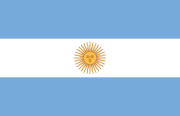 Argentina
Argentina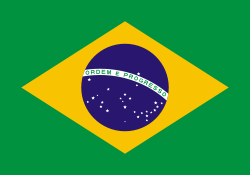 Brazil
Brazil Czech Republic
Czech Republic Macau, China
Macau, China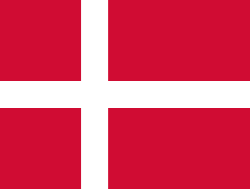 Denmark
Denmark Finland
Finland France
France Germany
Germany Hungary
Hungary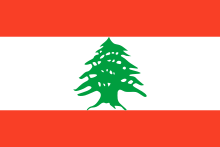 Lebanon
Lebanon Mexico
Mexico Netherlands
Netherlands Pakistan
Pakistan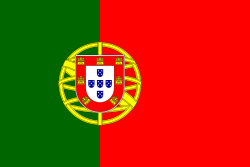 Portugal
Portugal South Africa
South Africa Sweden
Sweden Vietnam
Vietnam
Treatment of racing dogs
Living conditions
In the United States, greyhound racing is governed by state law, which ranges from total prohibition in some states, to other states which do not specifically regulate racing and largely rely on the industry's self-regulation. Kennels are made up of indoor crates stacked two levels high, with the females usually kept on the upper level, and males on the lower level. While the space allocated to each dog varies between locations, typical crate size is 3-1/2 feet wide by 4 feet (1.2 m) deep by 3 feet (0.91 m) high. While living on the track these dogs will spend most of their time in these kennels.
In addition to state law and regulations, most tracks adopt their own rules, policies and procedures. In exchange for the right to race their greyhounds at the track, kennel owners must sign contracts in which they agree to abide by all track rules, including those pertaining to animal welfare. If kennel owners violate these contract clauses, they stand to lose their track privileges and even their racing licenses.
In several European countries (Belgium, Denmark, Czech Republic, Finland, France, Germany, Hungary, Netherlands, Sweden, Switzerland) greyhound racing is carried out by the owners of the dogs without financial interest. This amateur form of the sport is also found in some countries, such as the United States, where professional racing exists. In these countries the dogs often live as pets.
In Australia
The Australian Greyhound Racing Association (AGRA) is divided into many state governing bodies, which regulate greyhound welfare and living conditions. All racing authorities in Australia, part finance some of the Greyhound Adoption Groups, which house dozens of greyhounds a month.
Each Australian State and Territory has a governing greyhound racing body. The New South Wales Greyhound Racing Authority (NSWGRA) and Greyhound Racing Victoria (GRV) are the two largest authorities, governing over 40 racetracks.
The Queensland Greyhound Racing Authority (QGRA), Western Australian Greyhound Racing Authority (WAGRA), Tasmanian Greyhound Racing Authority (TGRA), Greyhound Racing South Australia (GRSA), Northern Territory Racing Authority, and the Canberra Greyhound Racing Club (CGRC), all contribute to running and monitoring of greyhound racing in Australia as it continues to grow.
Greyhound Racing New South Wales (GRNSW) runs a Greyhounds as Pets program for retired greyhounds. Greyhounds as Pets is a not for profit industry initiative. The objective is to improve animal welfare in the greyhound racing industry by providing dogs with a ‘career change’ if they are not suited to, or ready to retire from the racing industry. The program starts with a staff of foster carers, who train the former greyhounds how to be pets and how to live outside the organised and structured life of racing. The Dogs are also provided with up to date vaccinations, are desexed, microchipped and wormed. If needed they also are given a dental exam. The costs of all these procuded are heavily subsidised by GRNSW initiative.
In Australia, greyhounds live in kennels at night and are put into running yards or day yards to keep them entertained and exercised, during the day, in accordance with guidelines set by the Australian Greyhound Racing Authority. This is aimed to keep greyhounds as fit, happy, and healthy as possible.
Greyhounds are checked for parasites, malnourishment, or any other medical conditions by an on-course vet before being able to compete.
In the United Kingdom
Greyhound racing is a popular sport in the United Kingdom with attendances at around 3.2 million at over 5,750 meetings, across 26 stadiums in 2007 alone. There are 28 stadiums in the UK, it is a Parimutuel betting tote system with on-course and off-course betting available, with a turnover of £75,100,000[3].
On July 24, 1926, in front of 1,700 spectators, the first greyhound race took place at Belle Vue Stadium where seven greyhounds raced round an oval circuit to catch an electric artificial hare.[4] This marked the first ever modern greyhound race in the United Kingdom.
Greyhound racing in the UK is regulated by the National Greyhound Racing Club (NGRC)[5] In the UK Greyhounds are not kept at the tracks and are instead housed in the kennels of trainers and transported to the tracks to race. There are 28 National Greyhound Racing Club (NGRC) registered stadiums in the UK.[6] Those who race on the independent circuit (known as 'Flapping), do not have this regulation.
In South Africa
In the Republic of South Africa dogs are kept with their owners. Due to the amateur state of racing, owners are usually also the trainer and rearer of the dogs; it is very rare that a dog is kenneled with a trainer.
Racing is controlled by a partnership between the United Greyhound Racing and Breeders Society (UGRABS) and the South African Renhond Unie (SARU - South African Racing Dog Union). The studbook is kept by the South African Studbook and organization who keep studbooks for all stud animals. Racing takes place on both oval and straight tracks. Racing is technically illegal in South Africa, which is strange as any other form of animal racing, i.e. horse racing, pigeon racing and even ostrich racing is perfectly legal. Great controversy rages because the use of greyhounds to hunt wild animals is a fairly common occurrence. The supporters of dog racing believe that legal racing, as an industry similar to that of Australia of Great Britain, would cause hunting to eventually stop.
Medical care
Greyhound adoption groups frequently report that the dogs from the tracks have tooth problems the cause of which is debated. The groups often also find that the dogs carry tick-borne diseases and parasites due to the lack of proper preventative treatments. The dogs require regular vaccination to minimize outbreaks of diseases like kennel cough.
Recently, doping has also emerged as a problem in Greyhound racing. The racing industry is actively working to prevent the spread of this practice; attempts are being made to recover urine samples from all greyhounds in a race, not just the winners. Greyhounds from which samples can not be obtained for a certain number of consecutive races are subject to being ruled off the track. Violators are subject to criminal penalties and loss of their racing licenses by state gaming commissions and a permanent ban from the National Greyhound Association. The trainer of the greyhound is at all times the "absolute insurer" of the condition of the animal. The trainer is responsible for any positive test regardless of how the banned substance has entered the greyhound's system.
Life after racing
After the dogs are no longer able to race (generally, a greyhound's career will end between the ages of four and six), or as soon as they no longer consistently place in the top four, the dogs' race career ends. The best dogs are kept for breeding purposes. There are both industry-associated adoption groups and rescue groups that work to obtain retired racing greyhounds and place them as pets. In the United Kingdom, according to the BBC, one in four retired greyhounds finds a home as a pet.[7] In the United States, prior to the formation of adoption groups, over 20,000 retired greyhounds a year were euthanized; recent estimates still number in the thousands, with about 90% of National Greyhound Association-registered animals either being adopted, or returned for breeding purposes (according to the industry numbers upwards of 2000 dogs are still killed annually in the US while anti-racing groups estimating the figure at closer to 12,000.).[8] Other greyhounds are either sold to research labs, or sent to foreign racetracks, sometimes in developing countries.
Several organizations, such as British Greyhounds Retired Database, Adopt-a-Greyhound and Greyhound Pets of America, and the retired greyhound trust try to ensure that as many of the dogs as possible are adopted. Some of these groups also advocate better treatment of the dogs while at the track and/or the end of racing for profit. In recent years the racing industry has made significant progress in establishing programs for the adoption of retired racers. In addition to actively cooperating with private adoption groups throughout the country, many race tracks have established their own adoption programs at various tracks.
In recent years, several state governments in the United States have passed legislation to improve the treatment of racing dogs in their jurisdiction. During the 1990s seven states banned live greyhound racing. [9] In November of 2008, Massachusetts held a vote to ban greyhound racing, which passed 56% to 44%.
In venues where greyhound racing does not involve gambling, the dogs are almost invariably pets and are, therefore, generally well treated.
References
- ↑ A listing of US Tracks
- ↑ Rocky Mountain News, June 23, 2008
- ↑ http://www.thedogs.co.uk/index.php?m=aid&id=347
- ↑ http://www.ngrc.org.uk/our_history.asp?cat=2&page=229
- ↑ http://www.ngrc.org.uk/overview.asp?cat=3&page=235#whatis-ngrc
- ↑ http://www.ngrc.org.uk/find_track.asp?a=srch| NGRC licensed stadiums in the UK
- ↑ "Inside Out - West: Monday 24th February, 2003". BBC Inside Out. BBC (2003-02-24). Archived from the original on 2007-12-05. Retrieved on 2007-12-05.
- ↑ Greyhound Racing Accociation media kit: The referenced industry figures do not include information about unregistered litters, nor outcomes for dogs after they finished as breeding dogs. The statistics vary depending on the reporting organization. According to the Greyhound Network News one page fact sheet estimates that of the 26,600 greyhounds that were no longer racing in 2005, 45% of them were euthanized by either groups that could not adopt them out or by the dog breeders via farm culling.
- ↑ Greyhound Racing Facts from the Humane Society of the United States
See also
- List of dog sports
- Greyhound
- Greyhound adoption
- Fully Automatic Time
External links
- GlobalGreyhounds.com Worldwide network of greyhound racing industry participants and fans.
- Global Association of all greyhound racing organizations.
- Comprehensive database covering greyhound pedigrees, races, stadiums, and adoption worldwide.
- Greyhound Hall of Fame recognizing tracks, breeders and dogs.
Further Reading
[1]Something for nothing: the free ticket myth